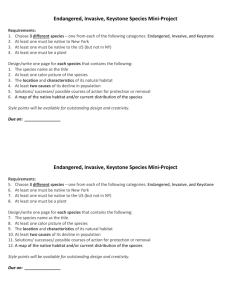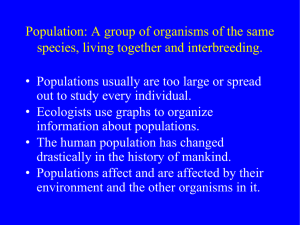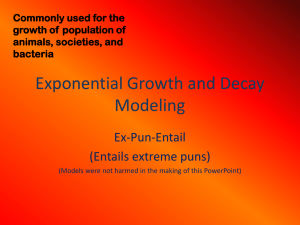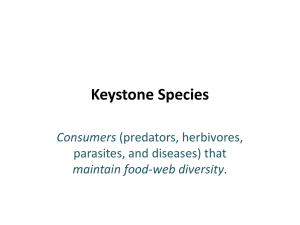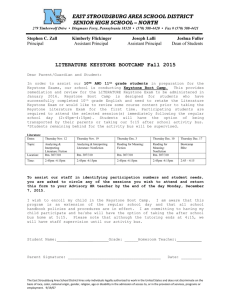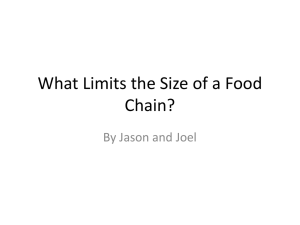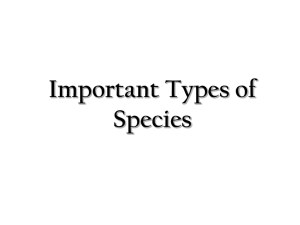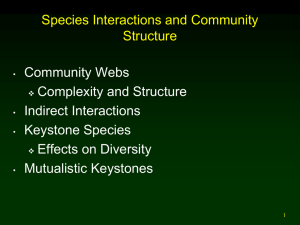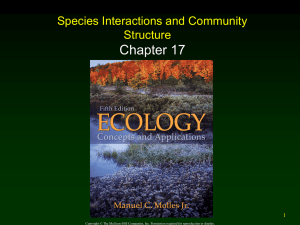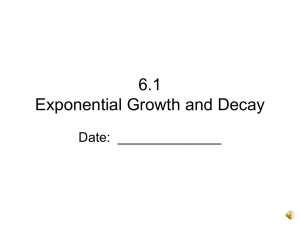Population Ecology
advertisement
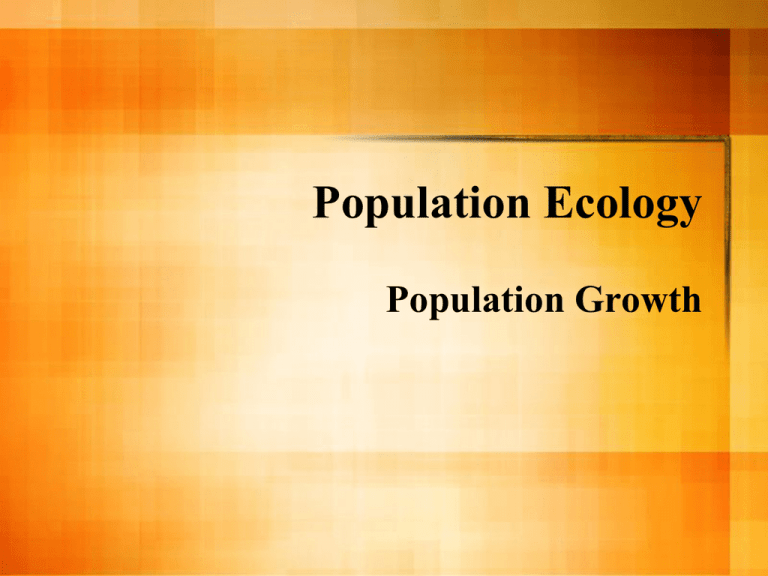
Population Ecology Population Growth Population Group of organisms of the same species living in the same place Population Growth more survive than die What are GOOD conditions for population growth ? Enough food Enough water Enough space Not too much disease Not too many (efficient) predators No serious natural disasters (examples?) No loss of habitat Little competition Patterns of Population Growth Grows quickly at first, then reaches a plateau Exponential, logistic, plateau Carrying Capacity Maximum number of individuals of one species that a habitat can support Predator curve follows prey curve in time N1 = prey curve goes up/down first N2 = predator curve goes up/down next Fluctuations in Populations Birth Rates/Death Rates/Immigration/Emigration Invasive vs. Keystone Species What is an invasive species? What impact do invasive species have on the environment? Keystone Species What is a keystone species? What may happen if a keystone species is eliminated from its environment? Keystone Species Research suggests that the number of honey bees is declining. – What may be some possible causes? – What may be possible impacts on the environment and society if honeybees disappear? Exponential Population Growth Definition: The geometric increase of a population as it grows in an ideal, unlimited environment. (Campbell, Reece; Biology 6th Edition) Some Math to Explain Exponential Growth Nt=Noert Where No= population at time 0 Nt= population at time t e= base of natural log r= per capita growth rate t= observed time of growth Due to the doubling time of certain organisms, such as these bacteria, the growth rate is exponential. Bacteriology 102 Web Site Examples What is one example of an organism that comes to mind when thinking of exponential population growth? Bacteria (microbes) Reproduce by fission every 20 minutes under ideal laboratory conditions At the end of this time there would be 2 bacteria After 40 minutes = 4 bacteria After 36 hours, a bacterial mat 1 foot deep would cover the globe. Calculations According to OnDarwin the other extreme, Charles Darwin calculated a theoretical example using elephants. On average, elephants produce 6 young in a 100 year lifespan. In an ideal environment with unlimited resources, 2 elephants could produce a population of 19 million in 750 years!!!! Let’s calculate our own problem RememberNt=Noert where Nt= population at time t No= population at time 0 e= base of natural log r= per capita growth rate t= time observing growth of organism Daphnia-water flea Daphnia reproduce at 0.6/day Start population of 100 Observe for 14 days (2 weeks) Nt= ? No= 100 e= natural log r=0.6 t=14 Nt=100e^(0.6x14) After 14 days, our Daphnia populations has grown exponentially to 450,000 fleas!
